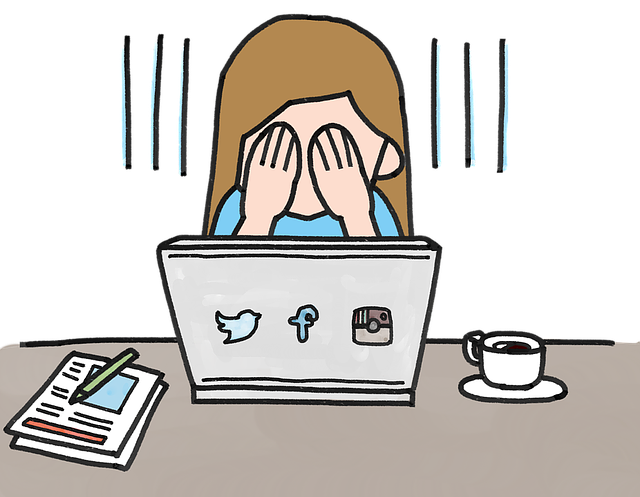
“You can do anything once you stop trying to do everything.” ~ Unknown
Achieving work-life balance in today’s society is becoming increasingly challenging.
It feels almost impossible to leave work at work and home at home, leaving us feeling stressed and unhappy. But what is work-life balance? We hear about it a lot but what does it actually mean?
Put simply, work-life balance is just that; a good balance between our personal and professional lives. However, our “right balance” today will be different to our right balance tomorrow and different to the right balance for our partners, friends or neighbours.
Studies show that the most productive employees are usually the ones leading the most balanced lives.
This eight step guide will help you to take the steps needed to achieve balance in your life.
Step One: Reflect on your priorities.
This is not just about what we should be doing but rather what we want to be doing.
We could ask ourselves what does or does not work well in my life?
What are my top “must haves” when it comes to my home life and my work life?
What is one step I could take right now to improve things?
Try writing down your priorities in order of importance. These will be the goals that will guide you on your journey to work-life balance.
Step Two: Manage your time more effectively.
Now that we know what our priorities are in our personal and professional lives, it’s time to recognise where our time is being lost. Try keeping an hourly log over the next week to see where you are using your time well and where time is vanishing into thin air.
Use a work-life balance planner to manage your days, hour-by-hour.
It’s important that the activities we do fit in with the list of priorities that we wrote in step one. And if they didn’t, what changes can we make to ensure that we are living the life that we want to? Perhaps it’s leaving work on time so we can get home and enjoy a long bath or go to a yoga class.
Step Three: Schedule some “me time.”
Some people need more “me time” than others but this step is vital to help us recharge our batteries. We need to give ourselves enough time to relax so we don’t feel exhausted at work every day. Most of us wake up early and the next thing we know, we’re in our cars, on the way to work.
Consider waking up just thirty minutes earlier and sitting in bed with a cup of tea and a good book. This is my own personal way of taking some “me time.”
You may be thinking, “I don’t have time for that,” but after writing your hourly log, you’ll see just how much time is being spent on Facebook or reading emails; time which would be better spent on yourself.
Step Four: Set work-life boundaries.
It’s vital to set boundaries. Work is going to stay at work. Home is going to remain at home.
A digital detox will really help us to leave work at work. Being connected makes it difficult for us to switch off. I always advise people to turn their phones off and leave it in another room when they are at home. Even better, don’t set up work emails on your personal phone in the first place.
We should also try banning technology at home during certain times of day. For instance, when we settle down to watch a film—do we really need to be on Facebook? Or when we go to our children’s football match on a Thursday evening, do we need to be checking our emails?
We should schedule activities to take place immediately after work, to stop us staying late so often. Meet with a friend, walk our dog or go to the pictures.
Step Five: Take care of yourself.
Achieving work-life balance is not going to mean much if we are not looking after ourselves physically. It is important that we try to eat healthily, get some exercise and sleep for seven hours a night, because it will do wonders for our mood and energy level.
This step may sound a little intimidating but we can take little steps to start. We could swap our whole milk for semi-skimmed milk, have a handful of fruit on our cereal in the morning or take the stairs instead of the lift.
Step Six: Spend time with friends and family.
Spending time with loved ones helps to decrease stress and increase happiness, which will also help us to be more productive at work. This will help keep our friends and family feeling good too.
Keep our phones away at the dinner table and banning any work talk. Meal time is for us and our families. Turn that TV off as well. Instead, we should make conversation at the dinner table and really listen to what is being said.
Step Seven: Don’t be afraid to ask for help.
“When something bad happens, you have three choices. You can let it define you, you can let it destroy you, or you can let it strengthen you.” ~ unknown
We all struggle at times and that’s okay. We don’t have to go it alone. We often see asking for help as a weakness. We almost believe that by asking for help, we are announcing our failure to everyone around us. But we haven’t failed. And certainly, the best option to prevent future difficulties is to ask for somebody’s advice, help or guidance now.
I am not saying it is easy but look around you, who hasn’t felt overwhelmed at work? When we’re feeling stuck in the workplace, we can each take 10 minutes to approach a colleague or manager that we trust and say, “I am a little confused about this project. Could we sit down together and have a bit of a brainstorm about it?”
You won’t look back.
Step Eight: Look forward to something.
Some people believe that the key to happiness is having something to look forward to. I believe in living in the present and appreciating each moment, but I can’t deny that I look forward to catching up with a friend at the weekend or having a long soak in the bath on my morning off.
Having something to look forward to gives us something to aim for and it gets us through tough days, weeks and months. The event we’re looking forward to doesn’t have to be a two-week holiday in the States. I look forward to sitting on the sofa with a hot cup of tea and watching Strictly on a Saturday night. And when you are in that moment, enjoy it. Focus on the present and for 30 minutes, just put your work stress to the back of your mind.
Work-life balance is an ongoing process. Take some time each month to re-evaluate your priorities and start the process again.
~
Author: Denise Chilton
Image: Pixabay
Editor: Ashleigh Hitchcock


 Share on bsky
Share on bsky




Read 0 comments and reply